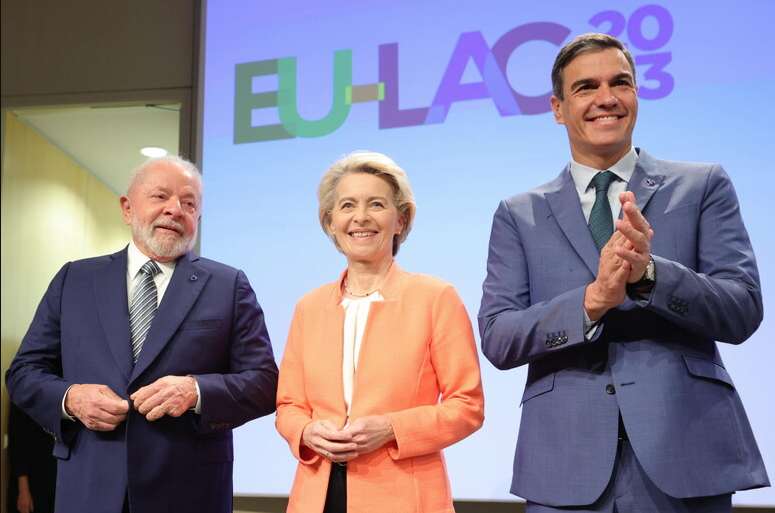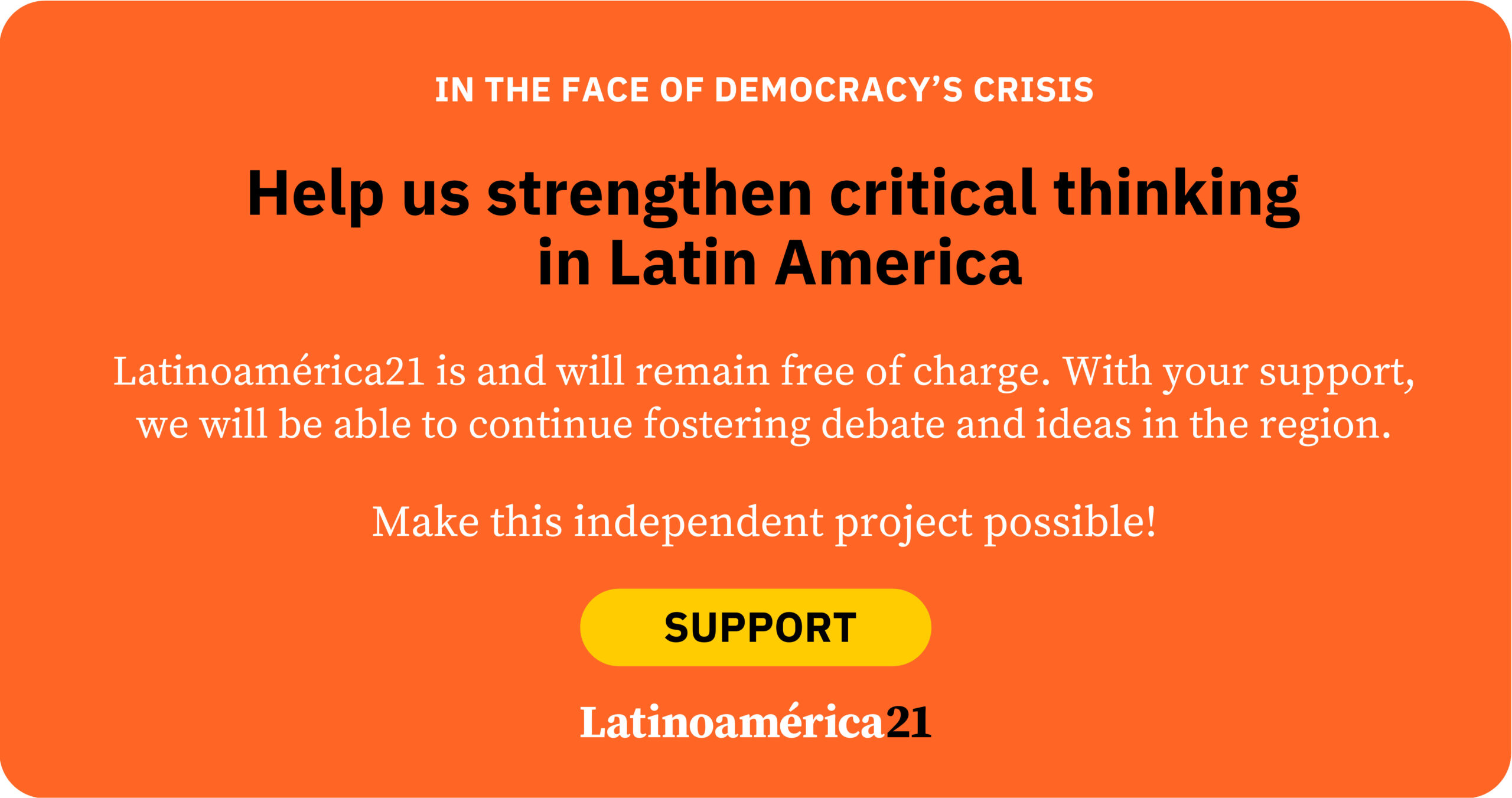The upcoming EU–CELAC Summit, scheduled for November in Santa Marta, Colombia, coincides with a period of increasing illiberal trends, heightened geopolitical tensions, and economic protectionism. In this scenario, the biregional relationship offers a “window of opportunity” to preserve a multilateral order and promote more horizontal cooperation. However, a gap between rhetoric and practice persists. Initiatives such as the Global Gateway—designed to close the investment gap in Latin America with an eye on decarbonization—actually reflect European priorities, according to an Oxfam report. Therefore, in Santa Marta, leaders from both regions will have to demonstrate that it is possible to move beyond mere pragmatism.
The Brussels Summit and the renewal of the bi-regional relationship
The Brussels Summit marked the reunion between Latin America and Europe. Its goal was to renew the strategic partnership after eight years without high-level meetings. Leaders put aside the rhetoric of shared values and instead opted for a pragmatic approach centered on shared interests, such as the energy transition and digitalization. However, the summit also revealed the limits of the EU–CELAC partnership.
On one hand, Brussels managed to reestablish the institutional channels that made it possible to reactivate political dialogue. The EU presented itself as a more reliable partner, attentive to Latin American needs. The launch of the Global Gateway initiative—through which Europe pledged to invest €45 billion in Latin American infrastructure by 2027—is a case in point. The project aims to address the lack of investment in the Global South and promote sustainable development.
On the other hand, fragilities emerged that threaten progress in the strategic partnership. Political fragmentation in Latin America makes it difficult to build a common voice. CELAC, the EU’s main interlocutor, is an intergovernmental body with limited institutional autonomy, dependent on the political will of its member states. When that will is absent, the organization falls into paralysis, as occurred between 2017 and 2021 due to divisions over the Venezuelan crisis.
The lack of cohesion was most evident regarding the situation in Ukraine. Given the differences among Latin American governments, the final declaration included only a “mild condemnation,” in line with Europe’s priority of maintaining dialogue with as many governments as possible. In this context, the EU opted for a flexible strategy toward Latin America—combining interregional relations, such as the agreement with Mercosur, and bilateral ones, such as the modernization of agreements with Mexico and Chile.
On the road to the 2025 Summit
During the two years separating the two summits, several initiatives were launched to give concrete form to the commitments made. Among these, important trade agreements and the implementation of the Global Gateway stand out. However, the first steps reveal that a gap between rhetoric and reality persists.
Last December, after 25 years of negotiations, the EU–Mercosur agreement was finally signed. Although primarily a trade deal, its scope is also geopolitical: it seeks to avoid a subordinate position in the face of the growing assertiveness of the United States, China, and Russia, and to promote more equitable cooperation. To that end, in addition to liberalizing trade in key sectors, it guarantees access to strategic raw materials—but with the possibility of “restricting the export of critical minerals for the energy transition in order to increase local value creation.”
Weeks later, negotiations to modernize the agreement with Mexico were also concluded. The new text provides for tariff reductions in areas such as agriculture, services, and telecommunications, and introduces provisions for combating corruption and promoting sustainable development. In February, the new agreement with Chile entered into force, expanding political dialogue, reducing tariffs, and more fully integrating the Andean country into value-added raw material supply chains.
The Global Gateway, meanwhile, has faced criticism. Data on its implementation show a concentration of projects in the green and digital sectors, with a clear preference for Brazil. Only 16% of the projects focus on health or education—key sectors for development. Moreover, as researcher Theodoro Luciano points out, these are not new funds but rather a reallocation of existing ones. Other analysts highlight a lack of transparency, difficulty in accessing information—especially for small and medium-sized enterprises—and limited participation of Latin American actors. A recent report by Counter Balance, Eurodad, and Oxfam, which analyzed more than 40 projects, concludes that the initiative “promotes Europe’s economic and geopolitical interests.”
The Santa Marta Summit and the challenges ahead
Two years after the previous summit, the geopolitical context has become even more complex, reinforcing the need for partnership between Latin America and Europe.
The return of Donald Trump represents a crucial factor due to the changes it implies for the White House’s priorities. At the recent Munich Security Conference, U.S. Vice President J.D. Vance made it clear that Europe is no longer a priority for the United States. The breakdown of the transatlantic relationship is prompting the EU to rethink its external alliances, and Latin America appears as a preferred partner given shared interests.
Europe also faces a legitimacy problem. Its stance on the situation in Gaza has been perceived by Latin American countries as hypocritical compared to its harsh condemnation of Russia. This double standard reinforces the image of a European Union that acts out of self-interest.
For Latin America, although the region is not at the center of the global agenda, Trump’s reappearance further accentuates political fragmentation, creating greater friction between governments that sympathize with his model and those that reject it. Recent electoral cycles have deepened these divisions and complicated regional coordination.
For these reasons, in Santa Marta, leaders from both regions will need to emphasize shared interests, particularly regarding the energy transition. Some analysts speak of a “green interregionalism” that seeks to include commitments to sustainable development within interregional agreements. Colombia’s presidency of CELAC could facilitate this path, although it should be noted that President Gustavo Petro currently faces an internal crisis. Moreover, it will be essential to deepen the dialogue’s scope by including issues relevant to Latin America, such as migration and crime.
Conclusion
In this context, the upcoming summit presents an opportunity to strengthen the bi-regional bond. The historic alliance of values can serve as the foundation for building a new cooperation agenda that reflects changes in the international system. For this reason, it is essential to emphasize shared interests with the goal of improving both regions’ international positioning. Europe must demonstrate that initiatives like the Global Gateway are not merely expressions of self-interest but a genuine commitment to Latin American development. On the other side of the Atlantic, it will be necessary to advance mechanisms of integration and regional coordination in order to make the most of ties with Europe. Only in this way can the relationship move beyond pure pragmatism.














